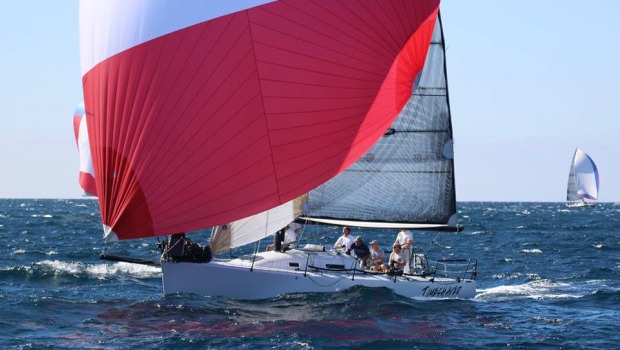Improving the use of PHRF
Published on January 7th, 2015
The PHRF handicapping system is a locally administered rule that uses the perceived speed potential of a yacht as the basis for the handicap. It is the easiest way for dis-similar keelboats to join together for competition.
The number of PHRF certificates in existence is huge, something like 20,000 in the U.S., but also huge is the number of people that aren’t actively racing. So there are a lot of boats able to participate in the racing schedule, but for whatever reason, they are not doing it. Dave Ullman, who started Ullman Sails in 1967, discusses what might help grow participation again…
To best protect the health of a PHRF region, the local committee needs to fairly rate the most competitive, top end racer. One way which helps is the 3-second rating bands, which makes optimization almost impossible. The goal for PHRF is to discourage optimization, and to rate boats as they are, as fairly as possible.
It is not in the best interest of PHRF to see its members investing sums of money in optimization, making their boat faster than its PHRF rating. What we encourage people to do is if they had optimized their boat for other handicap rules, to simply fold into PHRF with that configuration, and allow PHRF to assign a fair rating.
Managing the culture within the local PHRF fleet will help to insure that everyone is playing the game in a similar manner. Encouraging the social aspect is important to establishing the proper vibe.
And while the goal of PHRF is to be a simple system that allows for easy entry into the sport, there is no reason that it can’t serve the more experienced racers too. Each local area can have its fleet races that serve the casual racers, but it would be good to encourage regional championships for the more experienced teams to strive toward.
I would encourage each local level to determine the reasons people are not participating, fix any solvable problems, and hope for the fleet size to swell. We can’t look toward US Sailing as a savior, as there are local reasons for participation and they need local solutions.
One of the solvable issues is an acrimonious environment among the rating board(s). By heightening the cooperation within each board, seeing the boards work together, and have full thought on each rating determination, it would go a long way to providing solid leadership.
The perception is that the boards are self-serving and the ratings are unfair, and in almost every case it’s not true. But what turns that around is better communication. Where progress is being made on these fronts, perhaps promoting this information to the members will help to improve confidence in the system.
Another factor in this conversation is how events create the divisions within a regatta. The ideal is for displacement boats and sportboats to be separated, but if the entry numbers require them to be started together, it would be best to still score and award them separately.
But what is a sportboat? The definition often given is of a boat that performs better downwind than upwind. Boats that can plane downwind, such as sportboats, should not be racing against heavier boats that can’t plane. The PHRF system will have infinitely greater success when sportboats race against sportboats, and displacement boats race against displacement boats.
It’s all about people having trust in the system, and the fairness of the ratings. I am sure not every rating is perfect, but I also suspect the ratings are better than some people will give credit. It is a good system; we just need to focus on how we can improve our use of it.









 We’ll keep your information safe.
We’ll keep your information safe.